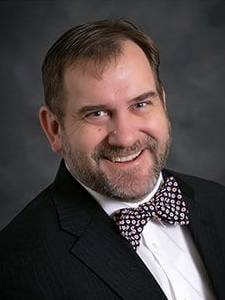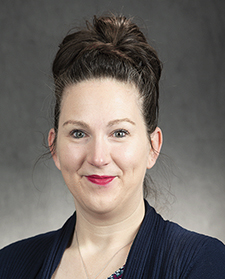The era of striking geographic polarization in Minnesota politics — in which Republicans control most of Greater Minnesota and Democrats have a grip on the Twin Cities metro area — was tempered at the Legislature over the last four years because the state House and Senate were split between the parties.
That meant both regions had a hand in budget and policy decisions, even as the political landscape shifted when Donald Trump was elected president in 2016.
Now, however, the DFL has full control at the State Capitol, leaving Greater Minnesota with substantially less clout over the levers of power in government when state lawmakers have a $17.6 billion budget surplus to allocate.
It may be an unprecedented situation, one that Democratic leaders have downplayed by arguing their priorities will help everyone in Minnesota. The few remaining DFLers from Greater Minnesota will also likely have significant sway because the party has such narrow majorities in the 2023 legislative session that began on Tuesday.
Still, the idea of one region holding the reins on most major decisions has raised concerns among some about the impact on the Legislature’s work and the lives of Greater Minnesota residents with different interests than people in the metro. And there is disagreement over whether Gov. Tim Walz, a longtime Mankato resident who has lived in the governor’s mansion in St. Paul for the past four years, will represent areas outside of the metro adequately.
“This session, maybe more than any, is going to be kind of a test of the ‘One Minnesota’ mantra,” said Bradley Peterson, executive director of the Coalition of Greater Minnesota Cities, referencing Walz’s campaign slogan. “It is going to be a test of the things that at least metro legislators and policy makers and the governor himself has said about wanting to legislate for the whole state.”
Parties ‘concentrated’ by geography
The severe partisan split between Greater Minnesota and the Twin Cities metro is a relatively new phenomenon.

But the change has been swift and significant.
Here’s the (brief) backstory: Amid the political transformation of the Trump era, Republicans have won nearly everywhere in Greater Minnesota, picking up seats in former DFL strongholds like Austin, Bemidji, East Grand Forks, Park Rapids, Grand Rapids, Cloquet, Hibbing, Cloquet and more. In turn, DFLers have turned once-red areas like Blaine, Coon Rapids, Burnsville and Eden Prairie into blue seats following suburban backlash against the former president.
Former Sen. Tom Bakk, the one-time DFL majority leader from Cook who became an independent in 2020, said the DFL had more than a dozen rural senators when the party won a majority in 2012. Now, DFLers hold six Senate seats in Greater Minnesota as part of their 34-33 majority. “They don’t have a lot else rurally to lose,” said Bakk.
There were 15 House Democrats last year from Greater Minnesota. But even as the DFL kept a 70-64 majority by winning big in the metro suburbs, the party lost five seats in Greater Minnesota, most in the northeastern part of the state. The party did win a district back in North Mankato/St. Peter, however.
At the Capitol, lawmakers from Greater Minnesota chaired 22 of 28 committees in the Republican-led Senate last year. Now Greater Minnesota legislators will chair three of 20 committees. In the House, the number of Greater Minnesota committee chairs dipped from eight to four.
Will Democrats keep Greater Minnesota in mind?
Peterson’s organization lobbies for increased subsidies from the state for local government operations in Greater Minnesota, and other issues like money for water infrastructure.
As a result of the geographic polarization, he said the Coalition will have fewer people in power they can ask to carry legislation, and fewer reliable and influential voices to ask questions about bills during committee hearings. The Coalition, he said, will have to try not to overburden the few rural DFL legislators in power as well. “At a very practical level, we have fewer go-to people,” he said.
“When you had Democrats from all around the state, I think you had a pretty good push and pull and balancing of interests that created either pretty good outcomes and, probably also at least from a Greater Minnesota perspective, prevented negative outcomes from happening,” Peterson said. “Without that or with many fewer Greater Minnesota voices, that balance and that kind of internal dialogue or that dialectic sort of push and pull doesn’t happen or it’s not as evenly balanced as it might have been in the past.”

He said construction projects financed with public bonding could be one issue where the parties could find agreement. Another is availability of housing, a major issue in many rural areas, Weber said.
“The purpose of the minority isn’t just simply to throw sand in gears and slow everything down but it’s also to make legislation better for the entire state, and I think there will be people that we can reach out to on the other side and work with them in order to get that done,” Weber said. And he said House DFLers can’t “cast aside rural issues” and ignore the few Greater Minnesota Democrats they have.
“So I think we’ll be able to reach across and just say ‘Hey, this something that really cannot be done, should not be done,’” Weber said.
Still, Weber said elections have consequences and he expects DFLers to pass things he won’t be happy about. And he said the GOP would fight to eliminate the state tax on Social Security benefits supported by some DFLers, relax regulations on businesses in an effort to drive new investment to the state, and ward off restrictions on agriculture Republicans view as burdensome.
“They’re going to try to come after agriculture to a greater extent and we’re going to be on guard for that,” Weber said.
Weber said Walz, who has clashed with Republicans on things like feedlot regulations but has supported legislation like bonding bills, broadband spending and Local Government Aid, has not lived up to the notion of “One Minnesota.”
Peterson said Walz will be “the final backstop.”
“The governor obviously is a guy from Greater Minnesota,” Peterson said. “He’s been very good to our organization, he likes working with local government leaders. Certainly we expect that he and his office will play a role in shaping some of this as well.”
What Democrats say
For her part, Dziedzic, the new Senate Majority Leader, made the case that Democrats actually expanded their representation in Greater Minnesota by winning a seat in Rochester that became far more friendly to the DFL after redistricting. The DFL also won a seat previously held by Bakk, who ran in 2020 as a Democrat before leaving the party.
And Dziedzic said people across the state voiced similar priorities during the 2023 campaign that Democrats will pay attention to, like child care, schools and housing.
“It didn’t matter if you were in Moorhead or if you were in Minneapolis, we heard that people are concerned about kids’ mental health and kids’ school and where they are in school after two years of COVID,” Dziedzic said. “There’s a housing crisis across the state. That is impacting families but it’s also impacting local economies.”
Dziedzic said she wants to work with Republicans, and she has turned to the Coalition of Greater Minnesota Cities for their perspective in the past, along with other interest groups like the Association of Minnesota Counties. And she said she often talked with people around the state as the top DFLer on the Senate’s housing committee in the past to learn about rural issues.
That housing committee for a time also included agriculture issues, which meant Dziedzic — she said she was the only woman and urban lawmaker on the panel — had a window into farm policy and hopes to address policy like farmer mental health.
Dziedzic said Minnesota Department of Agriculture Commissioner Thom Petersen would visit the committee and ask lawmakers to talk to farmers in their districts about certain issues.
“I would raise my hand and say, ‘I just want to be clear, I have multiple farmers markets in my district and near my district — and I do talk to your farmers at both farmers markets.’”

Boldon said there are similarities and differences in the priorities of people in Rochester and the Twin Cities. Issues like health care and affordable housing are important in her district, Boldon said. And she said the Greater Minnesota senators have been talking about shared interests so far. Boldon was previously a member of the House but won the seat long held by Republican Sen. David Senjem that became more DFL-friendly after courts redrew district boundaries.
“I haven’t ever felt like because of my geographic location I’ve had any less voice at the table than anyone else,” Boldon said. “In fact, maybe the opposite. I think oftentimes because maybe there are fewer Greater Minnesota folks we get the question more often of ‘well, what do you think about this?’”

0 Commentaires